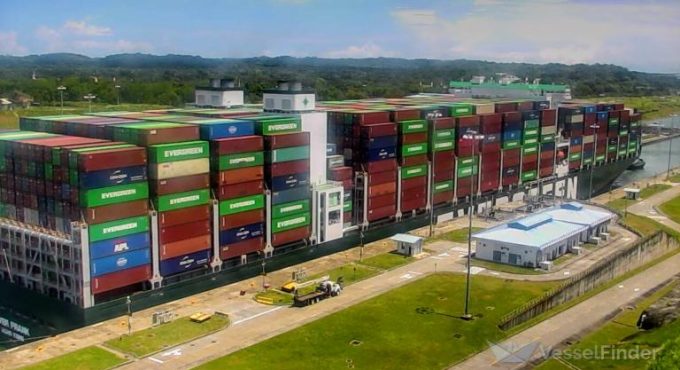Zemba gets things moving, as Hapag-Lloyd signs up for 'greener' shipping
Proving to be more than just idle talk, the Zero-Emission Maritime Buyers’ Alliance (Zemba) has ...

Hapag-Lloyd and Cosco have become the latest carriers to impose a Panama Canal surcharge (PCC), as the worst drought in more than 50 years continues to restrict capacity at the waterway.
Garman carrier Hapag-Lloyd said it would introduce a $130 per teu PCC on 1 January, when Cosco is set to introduce what it termed a Panama Canal Low Water Surcharge (PLW) of $255 per teu – nearly double Hapag-Lloyd’s, but less than the $297 per teu MSC has plans to introduce on 15 December.
The maximum draught of a vessel able to transit the canal as been reduced from 14.9 metres to 13.4 metres, while the number of daily transits has gone down, from the designed capacity of 34 to 38, to 24, which is set to be reduced to 22 on Friday, and again, to 18, by February.
Meanwhile, congestion at the waterway continues to mount on a daily basis, according to liner database eeSea, with 20 box ships waiting to transit – nine at the Pacific entrance and 11 in the Atlantic.
However, eeSea operations and forecasting analyst Destine Ozuygur says the total is actually closer to 30, when four vessels at anchor in Balboa, three at Manzanillo/Colon and two at Cristobal are factored in.
This compares with 17 vessels waiting to transit yesterday, with another 10 at anchor in the surrounding ports.
However, Ms Ozuygur also noted that the build-up of vessels within port anchorages may be connected to carrier attempts to mitigate the PCA’s restrictions.
“One method that has become increasingly popular has been to offload extra cargo in surrounding ports (Balboa, Cristobal or Manzanillo) before transiting N/S, successfully navigating the load restrictions and rerouting some capacity,” she told The Loadstar.
Meanwhile, Hapag-Lloyd CEO Rolf Habben-Jansen recently told The Loadstar he expected increasing numbers of vessels plying the Asia-North America east coast trade to divert to Suez transits on their return trips to Asia, a trend eeSea data now appears to support.
“The more outwardly dramatic, but less popular, measure for some eastbound vessels has been to reroute entirely and skip the Panama Canal in favour of a longer route back to Asia through the Suez Canal,” confirmed Ms Ozuygur.
“This has been a consistent behaviour observed for vessels deployed on the Ocean Alliance’s AWE5 service, but no public advisories have brought light to any sort of official change on the service’s proforma schedule.
“This service has seen 21 vessels omit the Panama Canal entirely since the beginning of these restrictions in late May, the latest being the Ever Frank on 20 November,” she added.
And the service that has seen the second-highest level of diversions from Panama to Suez was Ocean Alliance’s AWE8 service, “with just four vessels having skipped the canal in favour of Suez”, she added – although it appears other carriers are also choosing to route Asia-bound backhaul vessels via Suez.
“In the past 24 hours, our analysts have also picked up on three vessels on The Alliance’s EC1 service that will likely be diverting to Suez due to the recent uptick in congestion – we are still working to confirm these cases through the carrier’s long-term schedules,” she said.
Comment on this article